
P100,000 ‘trash’ bag and the unseen climate costs of fashion
[ad_1]
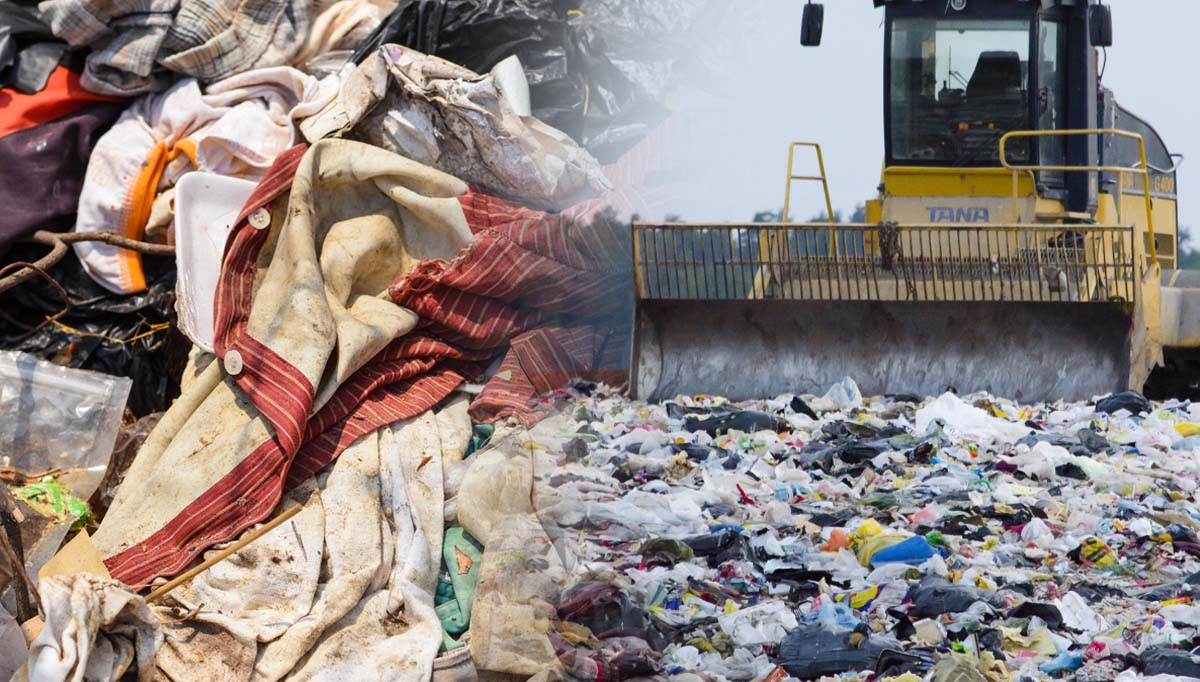
FILE PHOTO
MANILA, Philippines—Three months ago, luxury fashion brand Balenciaga launched the “Trash Pouch”—a designer item inspired by and looked exactly like a regular garbage bag. Recently, the item was put up for sale for the brand’s fall collection—for nearly P100,000 each.
The Trash Pouch was first showcased as part of Balenciaga’s Winter 2022 collection. The fashion brand has said, “[t]he Trash Pouch is inspired by a garbage bag.”
However, the faux trash bag is far from the usual plastic bags that most people have inside their houses. Aside from the designer label, the luxury trash bag is made from calfskin leather—one of the most expensive leathers in the world.
The drawstring calfskin bag—in typical garbage bag colors: black, blue, and white—just recently hit stores with a price tag of US$1,790 (P99,309).
The expensive trash bag became the recent object of ridicule among people online, with many describing it as an “ostentatious product.”
While some online users compare it to the usual trash bags sold in the market and used by many households, others believe it is a “morbid social experiment” by the luxury brand.
In an interview with Women’s Wear Daily in March, Balenciaga’s creative director Demna Gvaslia said: “I couldn’t miss an opportunity to make the most expensive trash bag in the world because who doesn’t love a fashion scandal?”
However, this was not the first time that Balenciaga released a product showcasing their own take on a familiar, non-luxury brand item.

A model carries the controversial “Trash Pouch.” FROM BALENCIAGA.COM
In 2018, the brand achieved notoriety with its US$2,000 Cabas Shopper bags, an almost spitting image of the iconic 99-cent blue IKEA shopping bags.
A year before that, Filipinos poked fun at the brand after it launched bags that looked similar to what netizens called “sako bags” or “Divisoria bags.”
“Part of his (Gvaslia) schtick is elevating the unseen everyday to deluxe status, poking fun at the pomposity of the fashion beast,” Vanessa Friedman, fashion director and chief fashion critic for The New York Times, wrote in her article.
Amid the criticisms and jests on Balenciaga’s newest controversial fashion piece, the Winter 22 show was said to reflect on the climate crisis and the ongoing war in Ukraine.
According to Friedman’s report, most of the season’s set would be recycled, “the carbon emissions offset.”
However, in many parts of the world, the continuously increasing production of fabric for clothing also increases global carbon emissions and microplastics in the oceans—which further exacerbate the climate crisis.
Environmental disaster
In recent years, the fashion and garment industry has been called out for being one of the most polluting in the world.
According to data from the United Nations Environment Programme (UNEP), the Ellen MacArthur Foundation, and the World Bank, the fashion industry contributes 10 percent of total global carbon emissions.
Carbon dioxide (CO2) emissions are one of the greenhouse gases (GHGs) identified by the Kyoto Protocol, which warms the Earth’s atmosphere.
The carbon emissions from the fashion industry were reportedly greater than those from all international flights and maritime shipping combined.
“At this pace,”the UNEP and the Ellen MacArthur Foundation said, “the fashion industry’s greenhouse gas emissions will surge more than 50 percent by 2030.”
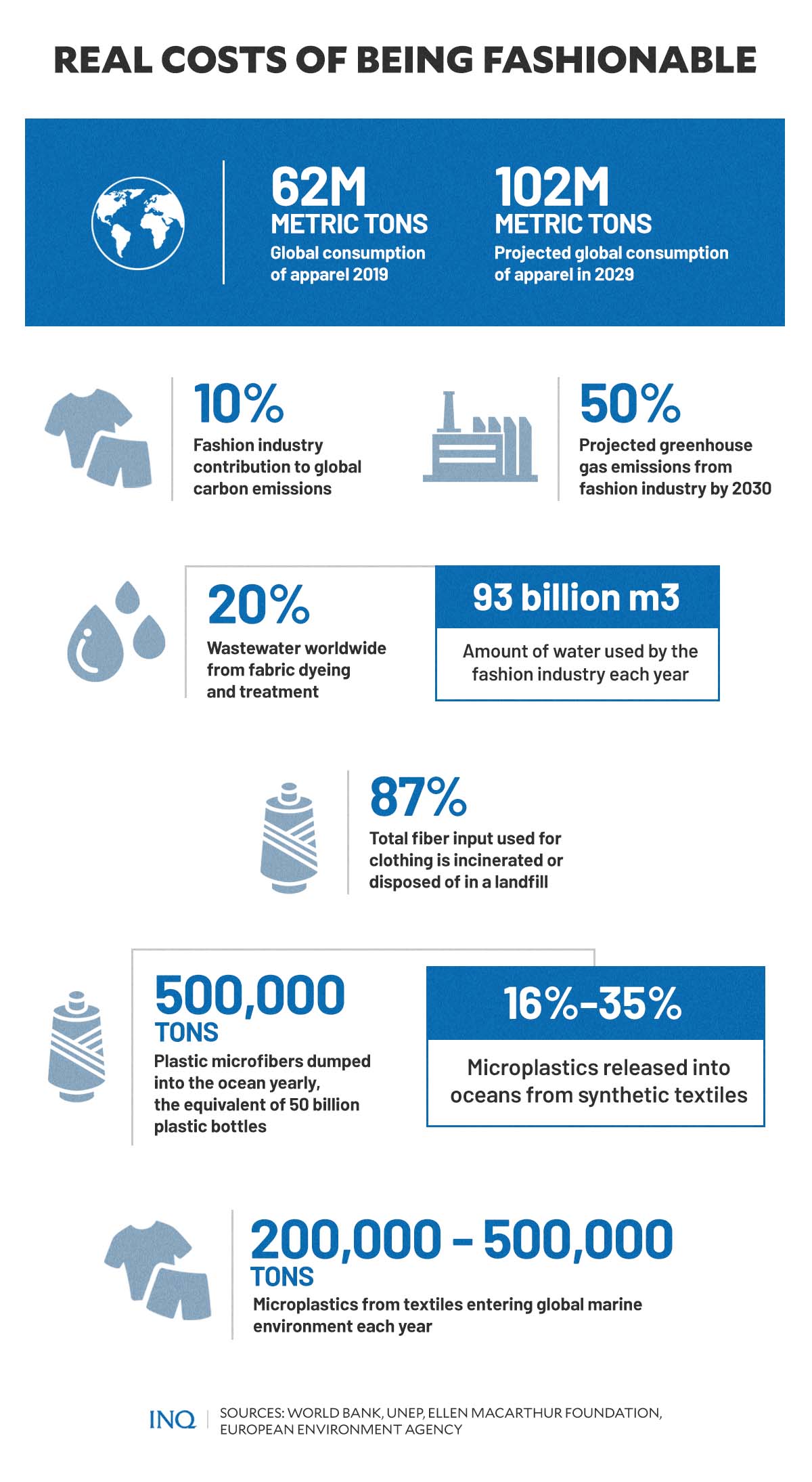
GRAPHIC Ed Lustan
Studies also found that a pair of jeans, from the cotton production to the final delivery of the final product to the store, requires 3,781 liters of water.
Each year, according to UNEP, the fashion industry uses 93 billion cubic meters of water—an amount enough to meet the consumption needs of five million people. By 2030, the water consumption of the industry is expected to grow by 50 percent.
Aside from being the second-largest consumer of the world’s water supply, the industry is also one of the causes of ocean pollution.
Washing clothes releases 500,000 tons of microfibers into the ocean yearly—an equivalent of 50 billion plastic bottles.
“The danger? Microfibers cannot be extracted from the water and can spread throughout the food chain,”the UNEP, the Ellen MacArthur Foundation, and the World Bank explained.
Many of those fibers are polyester, a plastic found in around 60 percent of garments. The World Economic Forum explained that “producing polyester releases two to three times more carbon emissions than cotton, and polyester does not break down in the ocean.”
Figures showed that 16 to 35 percent of microplastics released into oceans are from synthetic textiles. Between 200,000 and 500,000 tons of microplastics from textiles enter the global marine environment each year.
Almost 20 percent of the total wastewater worldwide comes from fabric dyeing and treatment.
‘Fast fashion’
The fashion industry, fueled by the ‘fast fashion’ trend, is also responsible for mountains of textile waste burned or dumped in landfills every year.
As defined by Merriam Webster, fast fashion is “an approach to the design, creation, and marketing of clothing fashions that emphasizes making fashion trends quickly and cheaply available to consumers.”
What makes the clothes produced by fast fashion companies appealing to consumers, aside from their low and affordable prices, is that most of the clothes are often based on styles presented on Fashion Week runways.
Experts also attributed the success of the fast fashion business model to social media and the rise of influencer culture.
The clothing industry, due to fast fashion and its increasing demand for cheaper yet unsustainable clothing, produces over 80 billion garments each year.
“If demographic and lifestyle patterns continue as they are now, global consumption of apparel will rise from 62 million metric tons in 2019 to 102 million tons in 10 years,” said UNEP and the Ellen MacArthur Foundation.
The biggest issue with fast fashion is that due to the faster and massive production of clothing, most of the clothes bought by consumers are usually thrown away after being worn just a few times.
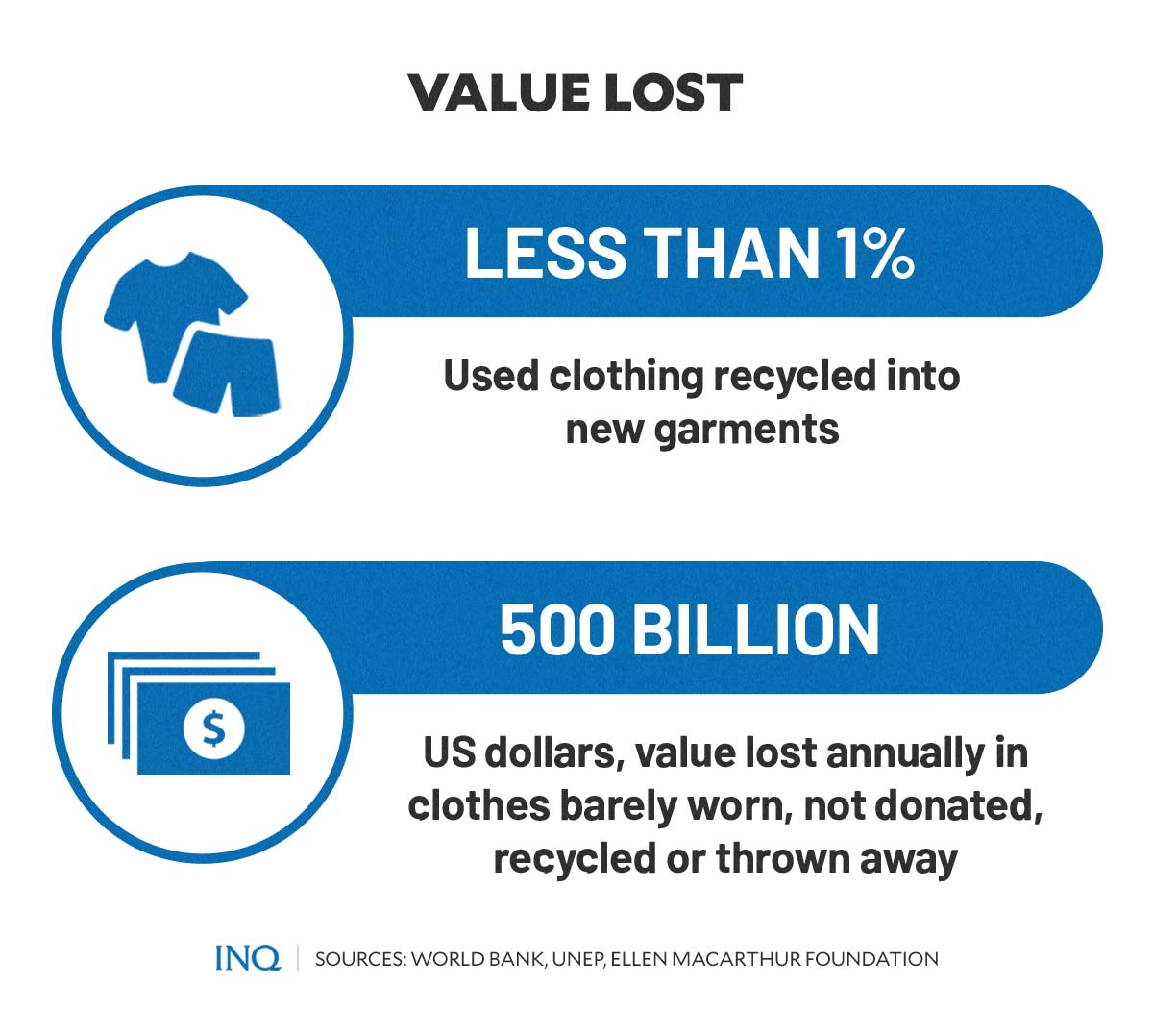
GRAPHIC Ed Lustan
According to an article by the Ethical Consumer, the fashion industry produces around 92 million tons of textile waste yearly—87 percent of which are incinerated or disposed of in a landfill.
Less than one percent of used clothing is recycled into new garments. Around US$500 billion in value is lost annually due to clothing that is barely worn, not donated, recycled, or ends up in a landfill.
“Some of this waste consists of items that never even reached the consume—clothing lines that have become outdated and so are destroyed instead of sold,” the Ethical Consumer reported.
Thrown away, unwanted clothes in PH
A 2017 YouGov Omnibus research showed that the negative impact of fast fashion—mountains of disposable clothing thrown away in landfills—has already reached the Philippines as more Filipinos buy new garments and throw old ones every year.
Figures showed that 65 percent of Filipino adults had thrown clothes away at some point between 2016 and 2017, while almost a quarter—24 percent—have thrown away more than 10 items of clothing during the same period.
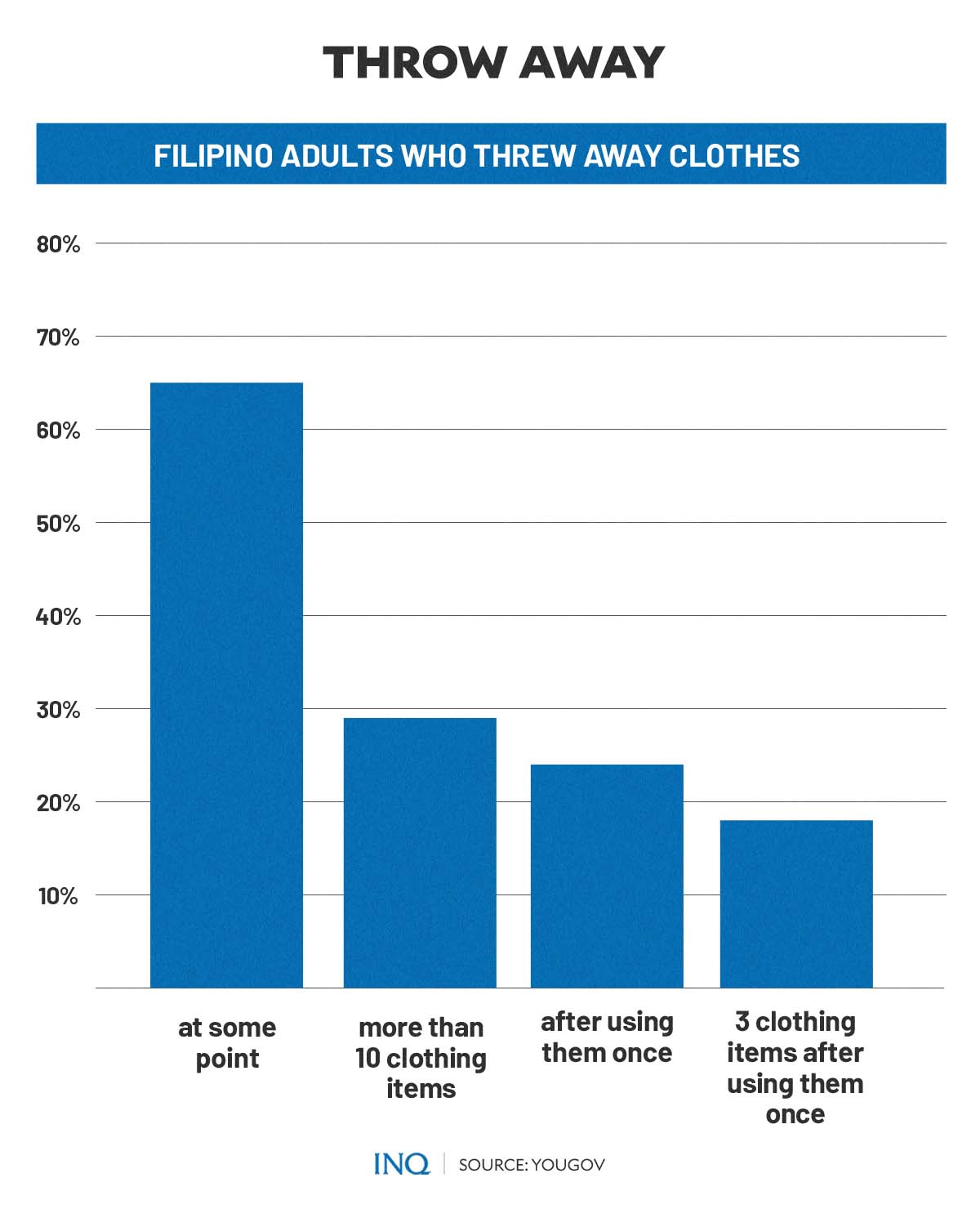
GRAPHIC Ed Lustan
Data also highlighted the extent of disposable clothing in the country, as it found that nearly three in ten users—29 percent—have thrown away an item of clothing after wearing it just once. Nearly a fifth—18 percent—said they have thrown away at least three garments they have worn only once.
Where the unwanted clothes go varied between two generations—the baby boomers (those over age 55) and millennials (those aged between 16 and 34).
YouGov researchers discovered that baby boomers were more likely to give their clothes to charity (63 percent) than millennials (47 percent). They were also more likely to pass on to friends or family their old or unwanted clothes compared to the younger consumers (80 percent and 70 percent, respectively).
However, millennials—being more familiar with technology and the internet—were more likely to sell or re-sell their used clothes online (16 percent) than the baby boomers (4 percent).
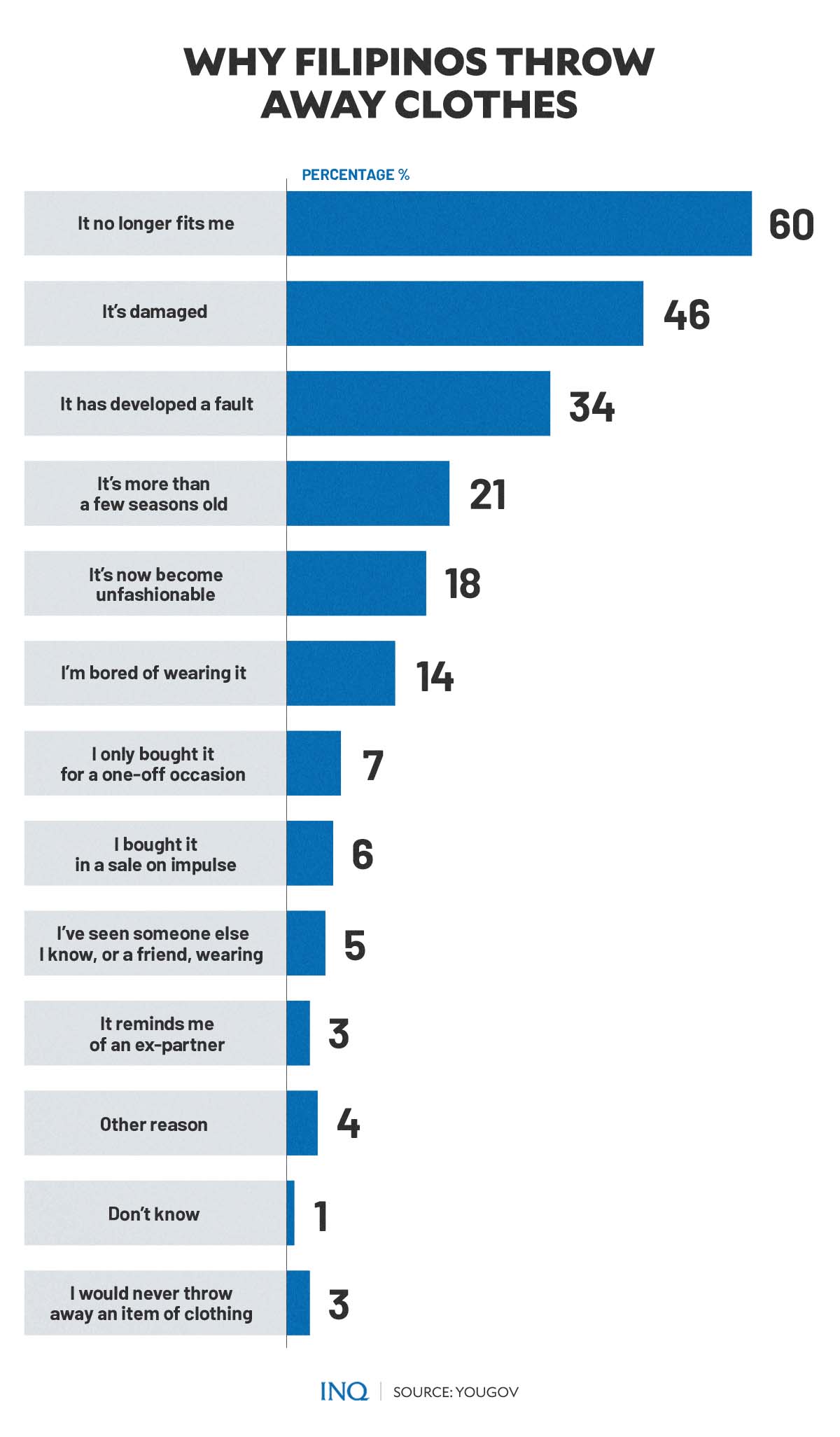
GRAPHIC Ed Lustan
Unfortunately, data showed that across all generations, one in eight—12 percent—of Filipinos had thrown unwanted clothes in the bin.
The study’s survey respondents cited various reasons clothes are thrown away.
The most popular reason for disposing of clothes was because the garments no longer fit (60 percent). Other reasons cited for throwing away clothes:
- It’s damaged: 46 percent
- It has developed a fault: 34 percent
- It’s more than a few seasons old: 21 percent
- It’s now become unfashionable: 18 percent
- I’m bored of wearing it: 14 percent
- I only bought it for a one-off occasion: 7 percent
- I bought it in a sale on impulse: 6 percent
- I’ve seen someone else I know, or a friend, wearing it: 5 percent
- It reminds me of an ex-partner: 3 percent
- Other: 4 percent
- Don’t know: 1 percent
- I would never throw away an item of clothing: 3 percent
“Fast fashion brands have been keen to remove their unsustainable label. Yet despite various recycling initiatives by leading labels, this survey highlights just how many clothes go to waste each year in the Philippines,” said Jake Gammon, head of the US Omnibus and Field and Tab unit within YouGov.
“Looking ahead to the future, there is a worrying trend among millennials; their propensity to dispose of clothing at a faster rate than older generations suggests that there is an uphill battle ahead for those keen to tackle this issue head on.”
What can consumers do?
There are ways to achieve sustainability in the fashion industry. However, everyone—including designers, manufacturers, critics, and consumers—must get involved to make it happen.
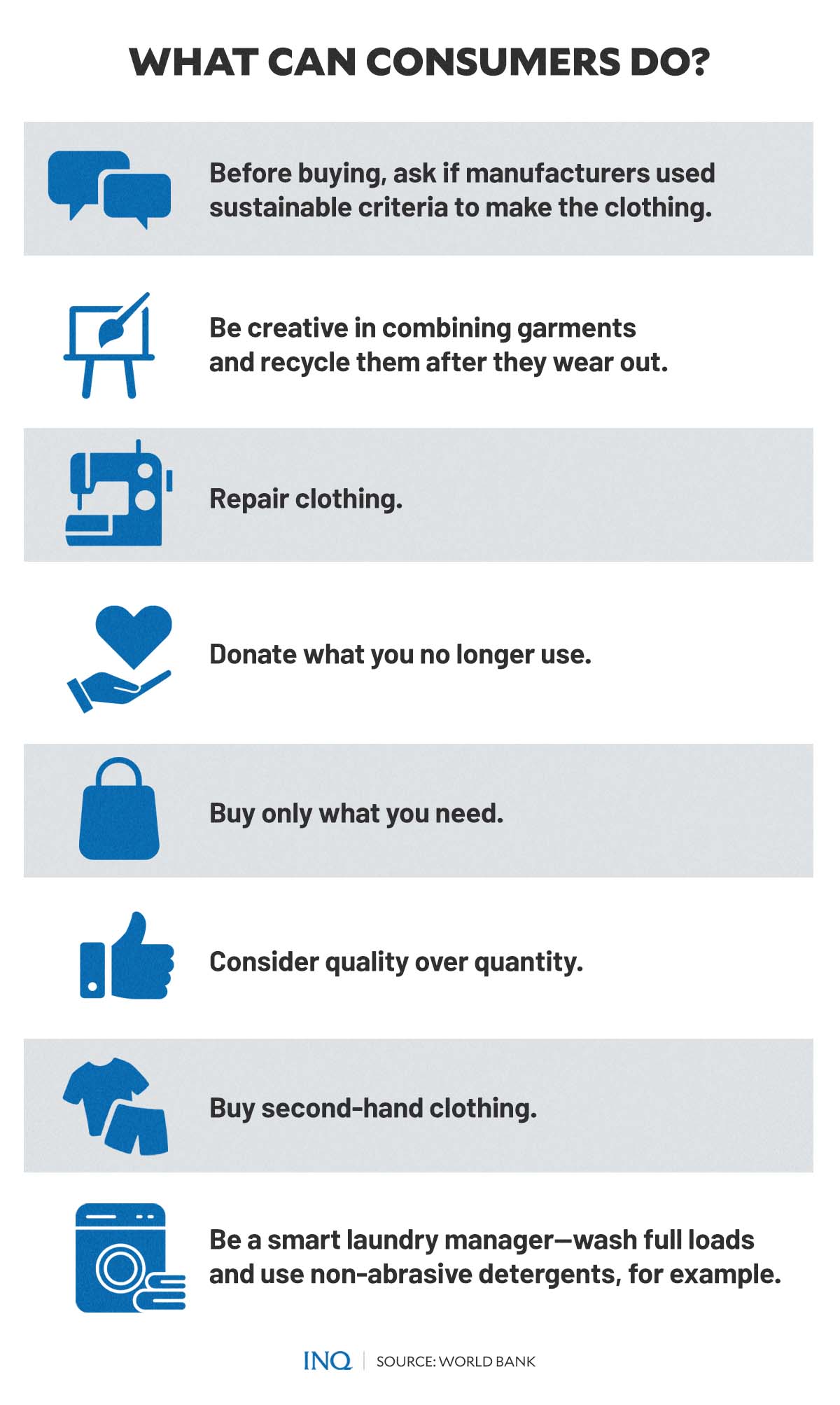
GRAPHIC Ed Lustan
According to World Bank, consumers can help by becoming more aware of what they buy. Following these small steps can help:
- Ask first if the manufacturers used sustainable criteria to make the clothing before buying.
- Redesign or upcycle garments after they wear out.
- Repair clothing.
- Donate clothes that are no longer used or worn to charities or shelters.
- Avoid impulse buying.
- Consider quality over quantity and shop for good quality clothes for a reasonable price.
- Try thrift shopping or go to “ukay-ukay.”
- Support sustainable fashion brands—or shops that uses materials that have a less negative impact on the environment for their clothing.
- Be a smart laundry manager by washing full loads and using non-abrasive detergents, for example.
TSB
[ad_2]
Source link


